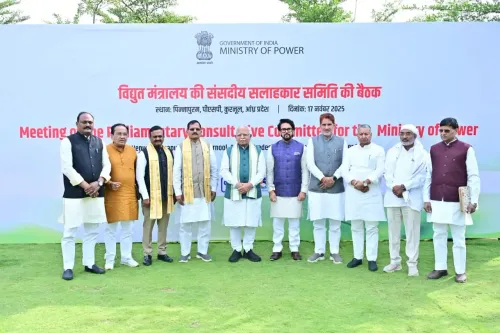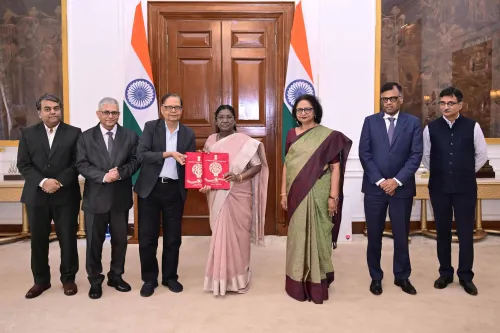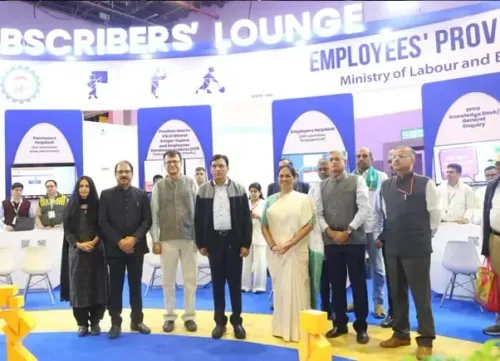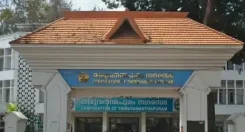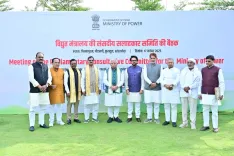Will Festive Stocking, Tax Relief, and GST Cuts Boost Auto Demand in H2FY26?
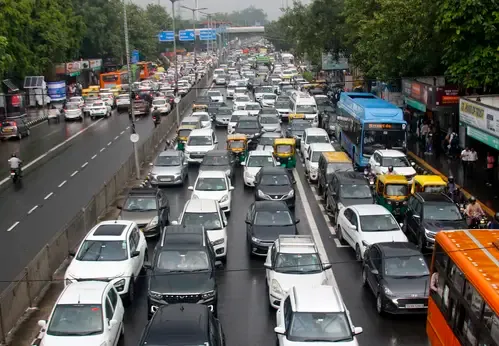
Synopsis
Key Takeaways
- Festive stocking is expected to enhance consumer demand.
- GST rate cuts are anticipated to positively impact sales.
- Two-wheelers and tractors displayed remarkable growth.
- Passenger vehicle sales experienced a YoY decline.
- Expectations for H2FY26 include high single-digit growth in PVs.
New Delhi, Oct 3 (NationPress) The Indian automobile sector is moving into the second half of FY26 with a sense of measured optimism. Factors such as festive stocking, GST rate reductions, and income tax relief are anticipated to enhance consumer demand, according to a report released on Monday.
Sales data for September exhibited a mixed trend. Strong growth was observed in two-wheelers, three-wheelers, commercial vehicles, and tractors, while passenger vehicle volumes experienced a decline year-on-year (YoY), highlighted Axis Securities.
Two-Wheeler/Three-Wheeler (2W/3W) Segment: Domestic two-wheeler sales increased by 6 percent YoY and 18 percent month-on-month (MoM), driven by impressive performances from Royal Enfield (43 percent YoY), Suzuki Motorcycle (37 percent YoY), and TVS Motor (12 percent YoY).
Exports remained robust, climbing 17 percent YoY and 2 percent MoM, led by Bajaj Auto, Hero MotoCorp, RE, and TVS.
Three-wheeler sales saw a rise of 12 percent YoY and 6 percent MoM, primarily supported by M&M (30 percent YoY) and TVS (60 percent YoY), the report noted.
Passenger Vehicles (PV): The PV segment reported a 5 percent YoY decline in wholesales, although sales surged 16 percent MoM, aided by deferred inventory clearance and GST cuts.
JSW MG Motor and Tata Motors excelled with YoY growth rates of 47 percent and 45 percent, respectively, followed by Toyota Kirloskar (31 percent YoY) and M&M (10 percent YoY). However, Maruti Suzuki experienced a 6 percent YoY decline, while Hyundai's performance remained static.
From a company perspective, Tata Motors’ PV sales skyrocketed by 45 percent YoY, while M&M’s PV division grew by 10 percent YoY. Maruti Suzuki reported a 6 percent YoY decrease in domestic sales, although MoM performance showed a 2 percent improvement.
Tractors: The tractor industry saw a significant rebound, with volumes increasing by 50 percent YoY and 124 percent MoM, benefiting from favorable monsoon conditions and high reservoir levels. M&M’s tractor sales surged 50 percent YoY and 148 percent MoM, while Escorts Kubota saw an increase of 49 percent YoY and 125 percent MoM. VST Tillers and Tractors posted a 42 percent YoY gain but fell 27 percent sequentially.
Commercial Vehicles (CV): Domestic CV sales rose 11 percent YoY and 19 percent MoM. Tata Motors and M&M reported mid-double-digit growth, while Ashok Leyland noted a 9 percent YoY increase. Eicher Motors’ VECV division remained flat YoY but improved by 6 percent MoM. In contrast, Maruti Suzuki’s CV sales dipped by 7 percent YoY.
Axis Securities expressed cautious optimism for H2FY26, projecting high single-digit growth in PVs and consistent demand in CVs, bolstered by festive demand, GST reductions, rural recovery, and new model launches.
Tractor sales are also expected to stay strong, supported by an enhanced kharif harvest and favorable reservoir conditions, according to the domestic brokerage firm.

